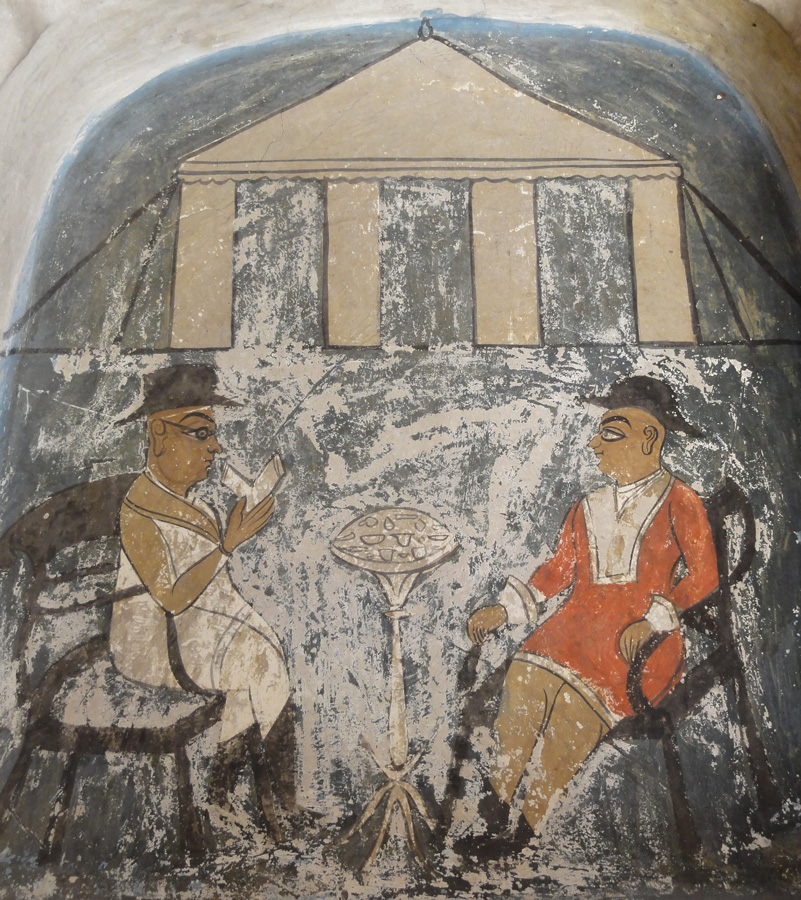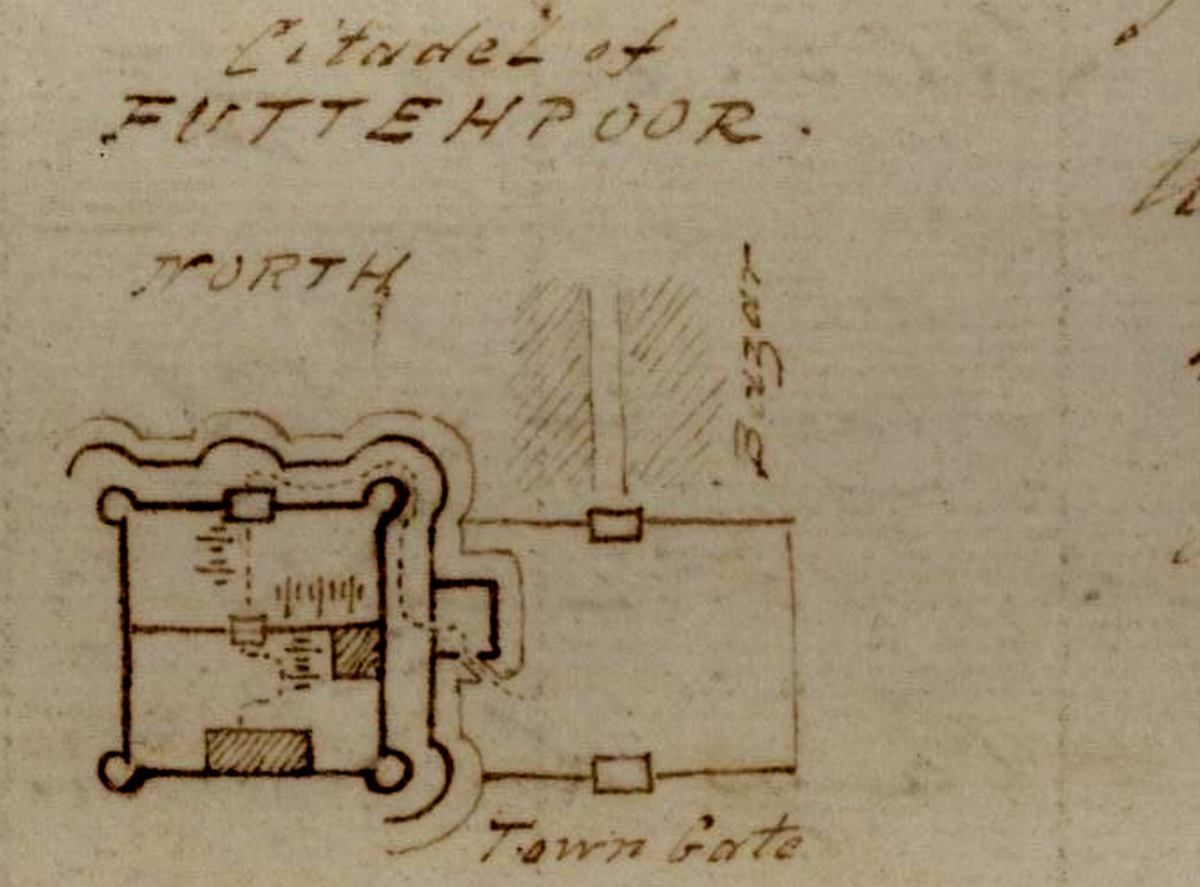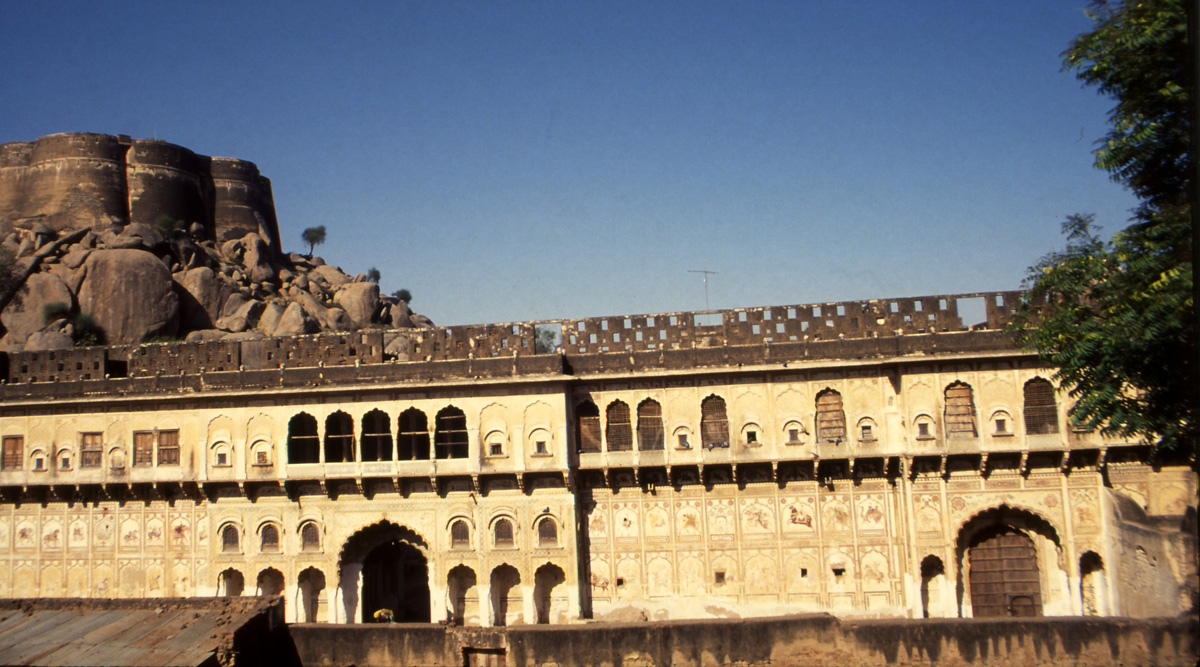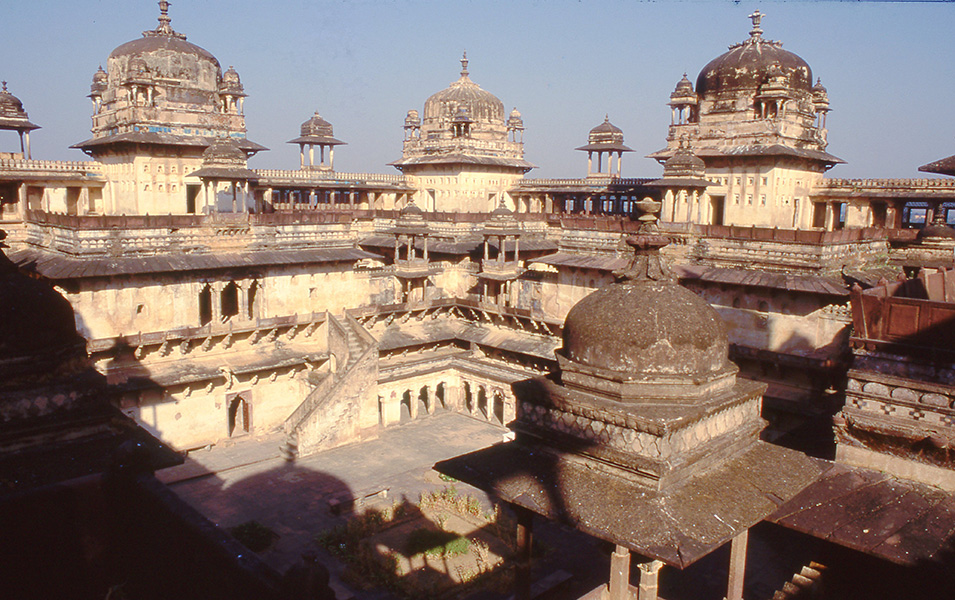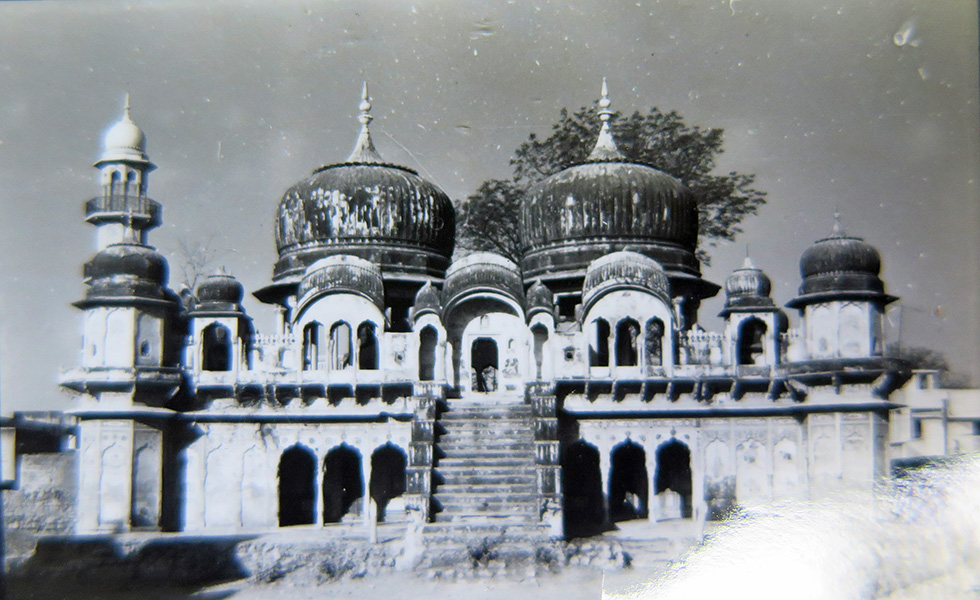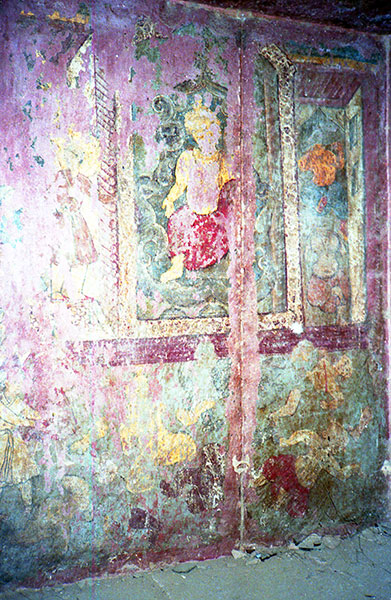24. Early Foreign Visitors To Shekhawati 2
23. Early Foreign Visitors To Shekhawati 1
October 1, 2020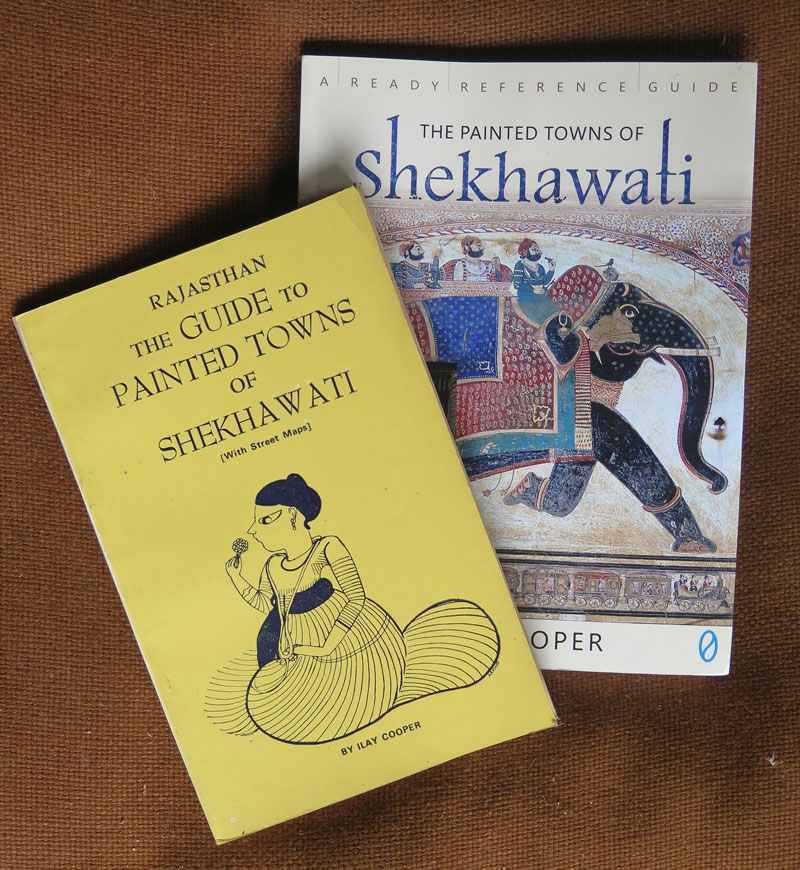
25. Into The Shekhawati Survey
October 15, 2020O n May 11th 1831 the cavalcade set out from Churu, crossing back into Jaipur state and camping just outside Ramgarh, founded only forty years previously. The thakur of Churu had decided to tax woollen goods when Kashmiri shawls, in great demand in Europe, were a major item of trade. In protest, the Poddar clan, principal merchants in Churu, approached the Raja of Sikar, who held neighbouring land, and asked to found a new town, Ramgarh there.
Ten years after Lockett, Major Thoresby passed by: 'The first appearance of Ramgarh when descried among the sand tibas … is singularly striking...numerous handsome houses of the seths (rich merchants) some ... on a magnificent scale, ornamented and painted outwardly...and cupolard chhutrees in the suburb in contrast with the desert around, altogether exhibit a scene deserving to be allied with enchantment.' Less so now for the powerful merchants have moved away, leaving havelis decaying, empty or rented out, but the shadow of that enchantment remains.
Lockett summoned four major merchants to state their grievances. They arrived with accounts of losses to bandits totalling 38,300 rupees, 19 camels loaded with cambric, seven with fruit, and 31 bullock carts of raw sugar. All had been taken to villages around Taen and Bissau controlled by Shyam Singh. Two of those merchants leave further traces; Jali Ram Poddar died that year in Churu where his chhatri has become a school and Har Sahai Poddar had built, in 1827, a pavilion and three-domed chhatri in Ramgarh.
And suddenly there is an image of the two officers (illustration 1). Around 1980, in Ramgarh's magnificent 1830s Bashashwarlal Poddar double haveli, I found a mural showing two foreigners at a strange house; thirty years later researching for Rajasthan: Exploring Painted Shekhawati, I realised this was them. Lockett, in glasses, consults a reference book - he carried several - while across an elegant table laid for tea, young Boileau, in a scarlet jacket, looks on. That strange house is their tent. Fortunately, I took photographs: soon afterwards the room was painted purple, however, a picture of the contemporary seth and his wife survives in the adjoining room.
The officers '...rode through the Town in the evening, which appeared handsome and populous. The houses, about 1000 in number, are very good, and the shops numerous, though all were shut...' From Ramgarh they followed a sandy track between bushes to Fatehpur. Lakshman Singh, Raja of Sikar, in Fatehpur solely to greet them, should have been waiting at the gate but one of his wives had died. After an hour he arrived with his eldest son, each on an elephant; after the formal welcome and a salute of field guns they were led into Fatehpur. Like all old towns, it had wandering, narrow streets. Its walls were only eight feet high. They camped outside the eastern gate beside a large well (surely, the 18th century Chauhan Well) of sweet water; in Shekhawati water is often brackish. The court bard visited Lockett to provide (and withhold) details of the ruling family. Later, an informant told him that the raja was 'weak and vacillating', very much controlled by his favourite concubine. Had she poisoned an older heir, born of his queen?
They went to the small palace in the fort, passing 15th century residential buildings of the previous Muslim dynasty, to meet the raja. Lakshman Singh, like many Shekhawat nobles, was addicted to opium, which an attendant supplied as they conversed. Boileau mapped the fort (illustration 2), marking its guns and their route to the palace. The fort has descended into ruin its fine carved stonework largely removed in the 1970s. The palace, with a mural of an other raja, was demolished.
The next town was Lakshmangarh, again weakly walled. It was built by Lakshman Singh as a merchant town, copying the grid plan of Jaipur with a wide central street passing through three squares or chaupads. The most impressive feature was, and remains, a powerful little fort capping a rocky outcrop, its northeast wall scarred by a cannonade from the Raja of Jaipur's army. With a garrison of 150 men and a large subterranean rainwater reservoir, it overlooks the later Four-Court Haveli (illustration 3). The houses were deserted, the 800 shops closed. Lakshmangarh had been raided by bandits and the merchants, bullied repeatedly for large 'loans' by Lakshman Singh, had moved elsewhere.
Lockett continued to Sikar, Lakshman Singh's capital, and camped '...near a large pagoda not quite finished'; I wonder if it ever was. Although known as Mahamandir – Great Temple – in the past century it housed the town's museum then became a dwelling. Boileau examined the fort's defences and artillery. They visited the palace less precariously than we did 150 years later. It was locked, the last raja living in Nepal and a boy showed us in over the roof of a nearby house. Little remained of the murals Lockett described but carvings and an important inscription from 9th century temple lay in the courtyard.
Lockett's Shekhawati tour was almost at an end. In two more marches they reached Lohsul, where a thakur tried to tell Lockett about local bandits but the Minister of the Jaipur court, in league with Shyam Singh, was involved with the bandits and his agents were ordered to prevent informants meeting him. This thakur made it under cover of darkness but an agent came and sat outside the tent, preventing him from speaking.
They quit Shekhawati for Jodhpur state where Boileau's only drawing including any of their entourage shows an elephant, tiny beneath Kuchaman Fort. At Ajmer, an island of British-held territory in Rajasthan, they stayed briefly amongst compatriots before returning to Bharatpur. There, Lockett wrote his Report.
[Boileau's plan of Fatehpur's fort includes cannons, residential buildings and (dotted lines) the route of their visit. Once handsome, it is now a ruin and an extensive public lavatory.]

